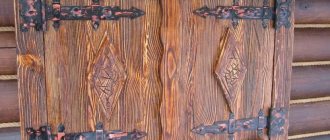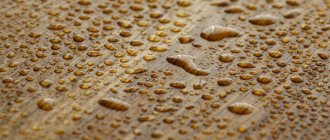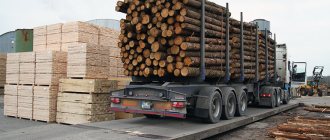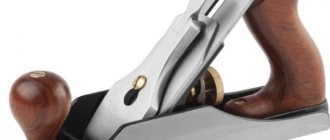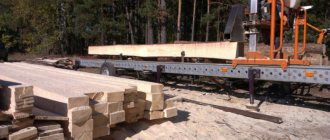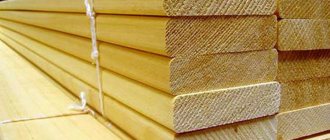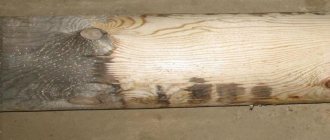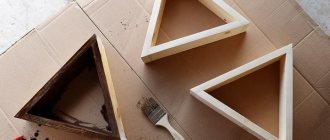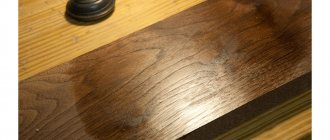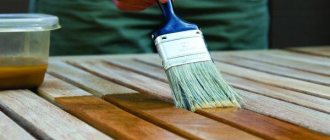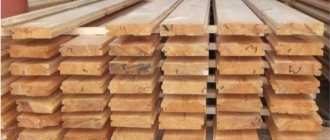Japanese wood preservation technology Shou-Sugi-Ban
The incredible Shou-Sugi-Ban technique is used to create waterproof wood furniture and finishing materials. Let's find out what it is.
At the beginning of the 18th century, special equipment appeared in Japan aimed at preserving wood, protecting it from external influences and extending its service life. It was called Shou-Sugi-Ban. Let's figure out what this technique is, how to do it all with your own hands.
Wood protection: History
According to the historical information of the carpentry portal Nakamoto Forestry, the Yakisugi technique (another name is Shou Sugi Ban) appeared in the 18th century in the central regions of Japan. Moreover, they discovered it completely by accident.
In those days, many Japanese cities were surrounded by dense cypress groves, which was associated with great risk, because an accidental forest fire could spread to the city and lead to irreversible consequences. For safety reasons, people began to set controlled fires, systematically burning forest areas in the immediate vicinity of their settlements.
Later, when local carpenters began using fire-charred wood in their work, they were surprised to discover that the performance of the material was much higher than that of traditional wood. The charred wood demonstrated immunity to fire, resistance to rotting and the effects of insect pests, and even had excellent external properties.
Of course, the material began to be in demand, and soon Japanese craftsmen began to practice artificial burning of wood (to protect wood), becoming more and more improved in this direction. This is how the Yakisugi technique was born, which subsequently had a significant influence on the formation of traditional Japanese architecture.
Shou Sugi Ban is one of the most popular woodworking techniques.
Initially, the Japanese used Shou-Sugi-Ban only for cedar, but then this technique began to be used to preserve ash, oak, maple, cypress, pine and other types of wood. The Shou-Sugi-Ban technology consists of burning wood and processing it with fire, which gives an excellent preservation and decoration effect.
After firing, the wood is not afraid of water, fire, sunlight, or pests. In addition, the flame highlights and emphasizes the structure of the wood, making each piece uniquely beautiful.
What you will need to preserve wood using the Shou-Sugi-Ban technique:
- Planks or slabs of wood you will be working with.
- Propane burner. Manual travel or connected to a gas cylinder.
- Brush with brass wire, sanding paper, sanding block.
- Wood polish on a polyurethane basis.
- Brushes for applying paint, stain and polish.
The burner must be large enough. Of course, small pieces of wood can be worked with a small torch, but if the piece of wood is large enough, a “spotty” effect may appear. The wood may be burned unevenly. With a large burner everything will turn out much faster and more evenly.
Take a test first. The same type of wood can manifest itself in completely different ways during firing! Decide how deep you want the firing to be. To a black-charcoal state or superficial so that the color is brown.
Important! The result of firing using the Shou-Sugi-Ban technique will depend on the condition of the wood. If it is old, you will have to burn all the top, dilapidated layers. In addition, damp, fresh wood will take longer and be more difficult to burn. The result also depends on the pattern of layers. If it is dense, the board or slab will look more beautiful.
During firing, the burner should be kept at a height of at least 30 centimeters, touching the wood with the very edge of the light blue torch. It's like you're painting on wood, making movements similar to the painting process. And you see how gradually your piece of wood gets darker. In the process, you will hear the cracking of wood. This means that you have achieved the goal, the Shou-Sugi-Ban drawing has been received.
After firing, the wood must be allowed to cool, and then the layer of soot and carbon deposits must be removed with a brush or sanding paper. Don't press too hard to avoid leaving streaks. The depth of brushing will depend on the firing depth. Wood can now be painted any color using exterior or interior wood paint, depending on where you plan to use your finished piece.
Wipe off excess paint immediately before it is absorbed. Then you should apply the stain with a brush and literally wipe it off after five seconds. Polish is used at the last stage of processing. If you plan to use the burnt wood inside the house, you can soak it in hemp or linseed oil. For outdoor use, the wood can be additionally varnished.
Where can wood preserved using the Shou-Sugi-Ban technique be used? The portal Rmnt.ru has already shown how beautiful and interesting slabs of wood look in the interior. Burnt wood can be used in finishing facades, building fences, making furniture and decorative items. Anywhere. This wood looks great and lasts a very long time. published econet.ru
If you have any questions on this topic, ask them to the experts and readers of our project here.
Did you like the article? Write your opinion in the comments. Subscribe to our FB:
Japanese wood preservation technology Shou-Sugi-Ban
At the beginning of the 18th century, special equipment appeared in Japan aimed at preserving wood, protecting it from external influences and extending its service life. It was called Shou-Sugi-Ban. The RMNT website decided to figure out what this technique is and how to do it yourself.
Initially, the Japanese used Shou-Sugi-Ban only for cedar, but then this technique began to be used to preserve ash, oak, maple, cypress, pine and other types of wood. The Shou-Sugi-Ban technology consists of burning wood and processing it with fire, which gives an excellent preservation and decoration effect.
After firing, the wood is not afraid of water, fire, sunlight, or pests. In addition, the flame highlights and emphasizes the structure of the wood, making each piece uniquely beautiful.
What you will need to preserve wood using the Shou-Sugi-Ban technique:
- Planks or slabs of wood you will be working with.
- Propane burner. Manual travel or connected to a gas cylinder.
- Brush with brass wire, sanding paper, sanding block.
- Wood polish on a polyurethane basis.
- Brushes for applying paint, stain and polish.
The burner must be large enough. Of course, small pieces of wood can be worked with a small torch, but if the piece of wood is large enough, a “spotty” effect may appear. The wood may be burned unevenly. With a large burner everything will turn out much faster and more evenly.
Take a test first. The same type of wood can manifest itself in completely different ways during firing! Decide how deep you want the firing to be. To a black-charcoal state or superficial so that the color is brown.
Important! The result of firing using the Shou-Sugi-Ban technique will depend on the condition of the wood. If it is old, you will have to burn all the top, dilapidated layers. In addition, damp, fresh wood will take longer and be more difficult to burn. The result also depends on the pattern of layers. If it is dense, the board or slab will look more beautiful.
Wood protection: Modern
The technology received its rebirth in the West. In the early 2000s, in the wake of the popularity of Eastern culture, European designers and architects began to increasingly use wood siding processed using the Yakisugi technique in their projects. Moreover, the gaijin not only adopted the technology from the Japanese, but modernized it and adapted it to their needs. They experimented with different types of wood and firing times, and used all kinds of varnishes and colors to achieve various artistic effects.
All this opened up additional possibilities and made it possible to use such finishing in combination with architectural styles that are as dissimilar as possible, including country, high-tech, modern, minimalism, contemporary, etc.
Japanese wood fire technology
I didn’t know, Google knows everything... In theory, the technology should be applicable to pine and larch.M.P.
Yakisugi (Shou Sugi Ban) or “cedar simmering” is a Japanese technique for treating the surface of wood using fire. This simple process not only allows you to reveal the texture of the wood, but also protects it from fire, rot and insects. The service life of such wood increases to 80 years, so it is used for cladding the facades of houses and building fences and, of course, used for interior decoration. Let's see what the Japanese technology of wood processing by fire looks like.
Japanese burnt wood
Surprisingly deep gray color, unique wood graying, uneven tan marks - all these are “side effects” of the Japanese wood protection technology, known as “cedar languishing”. Actually, it is not only the Japanese who engage in wood burning. In Russia, lining with tan is also found, however, this is not exactly the same thing. The technology of “simmering cedar” differs significantly from simple exposure to flame. For example, Japanese-style burnt wood can be soaked in oil or coated with other decorative compounds every 3-4 years. Firing itself is not only for aesthetics, but also for the preservation of the wood.
The Japanese have always been famous for their caring attitude towards nature and themselves. They traditionally avoid all kinds of chemicals whenever possible. How can you protect wood if you don’t use antiseptics and fire retardants? It turns out that firing does this job quite well. Oddly enough, burnt wood is much more difficult to ignite than unburnt wood. Burnt wood samples
For firing, the Japanese use mainly coniferous woods rich in resins. The most prized wood is cedar. First, the finished wooden parts are burned with a gas burner for 7-10 minutes. After this procedure, the tree is placed in water, where it is thoroughly washed and cleaned with wire brushes. Almost all carbon deposits are removed, leaving only a slightly charred layer up to 5 mm thick. This layer protects the wood well from moisture, bacteria, fungi, wood-boring insects and even fire. After firing, wood burns reluctantly, paradoxically as it may seem.
Burnt wood finish
Burnt and washed wooden parts can be used immediately or after preliminary impregnation with oils, which make the wood even stronger and more durable. A variety of oils can be used. They are available from many manufacturers, in particular Pinotex, OSMO, Tikkurila, etc.
In Japan, charred wood is found literally at every turn. This once again demonstrates that this type of processing is effective and practical. In its pure form, the burnt board takes on a gray iridescent hue. Unfortunately, this color cannot be achieved with the help of colored stains. The color of “simmered cedar” also depends on the duration of the fire treatment - from gray to dark brown, almost black. In Japan, this wood is also known as Shou Sugi Ban. It is used on the facades of houses, as well as in interior decoration and even for the manufacture of furniture. By the way, the Delta Millworks factory specializes in furniture production from burnt wood.
One of the advantages of charred wood is its durability. It can survive unchanged for up to 80 years, without requiring serious care or periodic treatment with bioprotective drugs.
05/14/2015 Text author: M. Tamilin
You understand everything with your mind, but... I want to help the “fire victims” with at least something...
Firing wood is an excellent alternative to painting black
A bold design for your façade can easily be realized by burning wood with a blowtorch to create dark or black exterior wall cladding colors. By using this wood processing technology, you can easily maintain the appearance of wood texture, unlike traditional staining, which masks the beauty of natural grain. Another disadvantage of using wood painting is that it requires regular, repeated application and the paint may contain harmful ingredients.
The green movement is steadily growing in the world of architecture and building design, with more people looking for natural, safe means of achieving a consistent look. Burning wood allows you to achieve a beautiful, dark finish for your project without relying on toxic surface treatments that can harm surrounding people and the environment. The overall safety and low maintenance level of wood treated with this technology makes it ideal for both urban and private households. Burnt wood adds a unique visual appeal to any home that enhances and complements a wide range of Japanese siding design styles.
History of the technology
Residents of Japan were among the first to burn wood to save their homes from fires. They massively burned the forest strips of cypress and cedar adjacent to the villages in order to protect the economy and buildings. After all, burnt, charred wood became perfectly protected not only from further fire, but also from biological destruction.
These new useful properties could not help but impress the artisans, and soon wood burning formed an entire technology that received a poetic name, which translated from Japanese sounds like “cedar languishing.”
Wood burning was widespread outside the Land of the Rising Sun. Craftsmen on many continents have used this method of protecting timber and structures. In Rus', this method was called “smoking.” To do this, they used the flame of a fire, under the influence of which the lumber and structures of future buildings were scorched. Firing is an excellent protection for piles and foundation formwork from groundwater and rot. And elements of the rafter system and roof fired using this technology are more resistant to exposure to sunlight and precipitation.
Application of technology at home
In everyday life, firing of lumber is used everywhere. The technology makes it possible to transform pine into rare wood without the use of stains, toners and oils. In particular, with deep firing, which is described in this article, the most defective pine easily turns into wenge (grows mainly in Africa). It is especially useful to use firing in the manufacture of products and structures that will be used outdoors. This could be garden furniture, a fence, a gazebo. Also, wooden elements of housing are often treated with fire - sheathing, front boards, terraces, staircase balusters, and so on. Burnt wooden boxes, gift cases, picture frames, grooves and photographs, various stands and lamps will look beautiful.
Why is wood burning necessary?
Wood, as you know, is a capricious material. The porous structure of its fibers easily absorbs and retains moisture. Subsequently, the timber swells and cracks appear on them, disrupting the structural properties of the products and their appearance.
In addition, wood, as a material of organic origin, is extremely susceptible to the effects of fungi, mold and bacteria. They destroy the internal layers, changing the mechanical properties: water permeability and impact strength increase, and strength decreases. Often, biological damage to a tree causes a change in the natural color of the trunk, its browning or the formation of a bluish coating.
Benefits of charred wood
The advantages of wood treated with open fire are as follows:
- presentable appearance;
- unattractive to insects;
- increased fire resistance;
- compacted surface;
- increased strength;
- improved moisture resistance;
- wear resistance;
- protection from ultraviolet radiation.
In addition, in the process of firing low-quality lumber, almost all defects are eliminated - darkening, blueness, slight rot. The processed product also does not require planing and finishing sanding.
Wood requirements
You can choose any type of wood for firing, because each sample will show its own unique pattern.
Hardwoods such as red oak, acacia or Caucasian hornbeam, due to their high density, acquire a pronounced dark gray tint when fired. Fibers of soft wood species, such as silver birch, gray alder, and common ash, will show their velvety structure and a bizarre elongated fiber pattern.
Before firing the selected sample, it is important to dry it properly. Make sure the wood's moisture content is no more than 13-15%. It is better to check this value using an electric moisture meter. Pay attention to the appearance of the wood, the presence of chips, scratches, and microcracks. Make sure that the material has not been pre-treated with chemicals. All this can have a detrimental effect on the final result, because the behavior of wood when exposed to high temperatures can be unpredictable. Oils or paint may ignite and cause permanent stains on plastered surfaces. It is better to use freshly harvested timber. In another case, the surface should be sanded to remove the roughened top layer from the product.
What kind of wood can be fired?
Not all wood can be protected and decorated in this way. First of all, this applies to fruit trees, oak, ash and alder. However, the most common lumber – pine and spruce – can be fired perfectly. Veneer and multi-layer plywood can also be treated with fire. For firing, it is best to choose a material on which the ornate structure is visible. During processing, the soft wood will fade and be removed, and the hard fibers will be highlighted in a darker color. At the same time, knots, blue stains, fungus and other defects are not a problem for fire. When firing coniferous wood, it is better to use dried material. It burns much faster, it contains less resin, which will cause certain problems later. It is also quite possible to burn raw wood. However, it should be borne in mind that such treatment will partially clog the pores of the material, and the moisture remaining inside will take much longer to come out, which is not good.
Firing types
In the professional world of cabinetmakers and carpenters, wood processing by firing is usually called brushing. There are several types of firing, which differ in the depth of exposure of the flame to the surface being treated. This value determines what appearance the product will have after finishing: the clarity of the fiber pattern, color and expressiveness of the structure.
The following types of firing are distinguished:
- Surface firing. Provides thermal impact on the upper layers of wood with a depth of 1 to 5 mm. It is one of the most popular and accessible methods. It can be produced in carpentry workshops using a soldering iron or a gas-air torch.
- Deep firing. Affects depths from 5 to 20 mm. Performed in an open wood-burning oven. At the same time, the wood changes color from dark brown to black with tints of graphite shades.
- Full firing. Occurs in industrial production or woodworking workshops in special vacuum furnaces under high temperatures. With this method, the wood changes its volumetric and dimensional characteristics, dries out and has a specific color and appearance. Therefore, such samples are more often used for the manufacture of unique luxury products or the implementation of design solutions.
Firing tools and materials
The main tool in this matter is a gas burner. Just an open fire (gas stove, fire, etc.) is not suitable, and it will not be possible to evenly burn a large surface. It is also undesirable to use a gasoline-powered blowtorch. It burns, of course, excellently, but drops of unburned fuel can fly out of its nozzle, leaving shiny spots on the wood. As an alternative, you can try using a hair dryer. But it takes a lot of time, and deep firing cannot be achieved. A gas burner is best suited for this task. It costs a penny, is safe to use, easy to control and configure. You can get by with even the cheapest Chinese-made option, which, together with a can of gas, will cost about $5.
For large-scale work, it is better to get a large gas burner, which is designed for laying bitumen roofing. In addition to a source of directed fire, you will also need felt. As a last resort, you can take a dishwashing sponge from the kitchen and use the harsher side for the job. Essentially, that's all there is to it.
Firing technology
Decorative firing of wood is carried out using devices with a heating element, such as a blowtorch or a hair dryer. Under the influence of high temperatures, the wood heats up, the moisture evaporates, then the fibers dry out slightly and become charred. In this case, the color of the surface of the product changes depending on the intensity and time of exposure. Uniform burning is ensured by perpendicular tangential movements of the devices to the plane of the wood.
This treatment makes the wood more wear-resistant and does not require further processing if the product is used under normal conditions. Otherwise, it is recommended to finish the wood with oil-wax impregnation or varnish to prevent moisture penetration, drying out or cracking.
Japanese way
Wood burning using classical Japanese wood preservation technology occurs using an open fire. Previously, a torch was used for this, but today a technologically advanced gas burner. The fire should be at a distance of 30 cm from the surface of the product, while affecting the wood tangentially. In order for the drawing to appear effectively, the movements when working should be smooth and soft, similar to swinging a brush with paint.
Do-it-yourself wood burning
Do-it-yourself wood burning is an operation that requires skills when working with high-temperature devices. The process of processing timber using fire can be divided into several stages:
- Preparatory. Before firing, it is important to ensure that there are no defects that affect the original appearance of the product. If there are traces of varnish or paint, remove them by sanding, solvent or water. Clean the surface from dust and dirt with a soft brush or lint-free cloth. You should also prepare a workplace, special clothing, glasses and gloves. In home or industrial production conditions, it is important to observe fire safety measures, because firing technology involves working with open fire.
- Basic. Using a device with a heating element (gas burner, hair dryer, blowtorch), process the wood with tangential movements from top to bottom. This should be done evenly, without lingering in one place. Clean the burnt layer horizontally, along the grain, with a brush with coarse bristles or a sander with a fine-grained attachment. To enhance the effect, repeat the operation, cleaning the surface each time.
- Final. After firing, the wood is thoroughly cleaned of dust and ash. If necessary, it is coated with natural oils or chemical impregnating compounds. The tool is checked for serviceability and stored in insulated boxes, separately from flammable materials.
Firing wood produces a variety of textures and tones
While charring wood may seem simple enough, there are many different techniques for applying this technique, resulting in many different textures and shades. If you're looking for something with character, something to make a bold statement, you might prefer wood with a thick, deep black-fired finish. If your design instead requires something lighter with smoother surfaces, decorative firing is all you need. There are even series that lightly char and suppress the wood to create multiple tones in one piece while maintaining the superior performance and durability that the combustion method brings.
While there are many different uses for kiln technology, it is important to remember that not all products are created equal because not all wood burns the same. Some types of wood that have a weaker structure may appear a little soft after burning. This is why woods like cedar are often preferred because they have a bolder, richer texture appearance after the charring method is applied.
Application
Burnt wood is used in the finishing of external and internal surfaces of walls in the form of facade or decorative panels and half-timbers, which meet high requirements for wear resistance and durability. In the interior, burnt wood products are found as exclusive furniture and luxury items.
Fire-treated wood is a durable and reliable material that retains its elegance and nobility. This material will make any home cozy and add a special chic.
Burnt wood brings out the natural beauty of the wood
The firing technique is ideal for designs that want the character of wood with interesting intrigue. Various charring techniques help bring out the natural grain like no other wood finishing method. This technique is a great complement to traditional wood, as well as a great contrast to more modern materials such as metal and glass. The deep texture highlighted by firing technology is an easy way to create a beautiful design that is sure to make a lasting impression.
Whether the firing technique is used for interior or exterior applications, the result is superior performance that will allow your design to last longer and remain beautiful. The beauty of charred black walls and their natural durability are making the charring technology more common in building projects around the world. Ease of maintenance and the choice of environmentally friendly materials also contribute to the choice of wooden siding for cladding the facade of a house.
